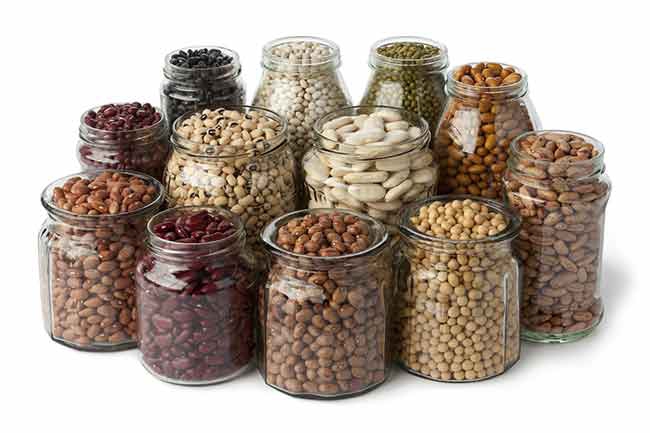
The Final Proof: March 2016
February 26, 2016
By
Jane Dummer
The pulse on pulses
 Pulses are great sources of nutrients including protein, fibre, iron, folate, potassium and magnesium. Photo: Fotolia
Pulses are great sources of nutrients including protein, fibre, iron, folate, potassium and magnesium. Photo: FotoliaIt’s the International Year of Pulses. Now is the time to learn how to bake with this nutritious group of foods.
In my Final Proof column from May 2011, I introduced pulses for baking. Fast-forward five years later and 2016 is now the International Year of Pulses. As part of a worldwide marketing campaign, consumers are being urged to eat more beans, lentils, chickpeas and peas. What a perfect occasion for the baking industry to add more pulses to its line up! Let’s explore the health benefits of pulses, and then dive into the baking applications and opportunities for the industry.
Last November, I attended Little Beans, Big Opportunities: Realizing the Potential of Pulses to Meet Today’s Global Health Challenges at The New York Academy of Sciences. Dr John Sievenpiper, staff physician at St. Michael’s Hospital and associate professor in the department of nutritional sciences at the University of Toronto, was the best speaker at the event and described many health benefits of pulses in his presentation.
“Consuming 130 grams of pulses daily can have a beneficial effect on blood lipids, blood pressure and blood sugar, which promotes heart health,” Sievenpiper explained. However, he cautioned that the majority of Canadians are not consuming pulses on a daily basis and welcomed culinary ideas to encourage consumption.
“In addition to the benefit of cardiovascular health and diabetes, there is new research [to be published later this year] regarding another positive effect of daily pulse consumption. Eating pulses promotes satiety which can assist in maintaining a healthy body weight.”
We know pulses have been part of the human diet globally for thousands of years. With the increasing trend of plant-based dietary patterns in Canada and the U.S., there is more awareness of how to cook and bake with pulses.
Christopher Marinangeli, PhD, RD, and director of nutrition, scientific and regulatory affairs for Pulse Canada shares: “With the development of pulse flours, and other pulse-derived ingredients, there are innovative opportunities for increasing the use of pulses to boost the nutritional profile of baked goods.”
In the past five years, there has been a great deal of learning how to use pulses in baking, batters and breadings. These ingredients are helping to meet consumer demand for gluten-free, dairy-free, nut-free and egg-free products. In a joint presentation with Pulse Canada, Margaret Hughes, vice-president of sales and marketing for Best Cooking Pulses, will discuss egg-replacer applications at the Research Chef Association Annual Conference in Denver this March.
Hughes explains: “Pulses are a good option for egg-replacers as they are high in protein, low in fat, with the benefit of fibre, compared to other available options. A recent innovative discovery, ‘aquafaba,’ refers to the liquid in a can of chickpeas. This liquid can be beat into a meringue, creating a vegan egg replacer. We are working with local chefs in Manitoba to explore other functions of this ingredient.”
With more traditional breads, muffins, crackers and breading applications, Best Cooking Pulses, a Canadian, family owned and operated company, offers locally grown pulses to customize flour blends using their proprietary milling method. The method allows for different granulations, specific particle size and particle size distribution.
“We work with our clients based on their needs, then we provide solutions to achieve delicious, healthy end products for them,” Hughes says. “We have discovered different taste profiles based on the granulation and pulse type, plus how to provide consistent, repeatable blends. Recently, Safeway in California successfully launched quinoa bread with our chickpea, lentil and yellow split pea flour blend.”
The combination of pulses and grains provides numerous ways to increase the nutrition profile of bread and baked goods. Marinangeli from Pulse Canada agrees.
“A pragmatic approach to incorporating pulses into baked goods is looking at how pulses can enhance the overall nutritional profile of baked goods. Pulses contain significant levels of nutrients, including, protein, fibre, iron, folate, potassium and magnesium. Therefore, the addition of pulses and pulse flours are a great way to increase the nutrient density of baked foods.” Marinangeli is thrilled to share emerging research on the influence of pulses and gastrointestinal health. And as we all know, there is a heightened consumer interest in digestive health.
“In fact, recent studies suggest that pulses may help with inflammatory responses associated with colitis*,” he says. “Although human data are needed to corroborate these preliminary findings, this is an exciting area of research.”
While research continues to pursue the effects of pulses on health, the time is now for bakers, ingredient companies, retailers and restaurants to explore the various pulse possibilities!
- *Monk et al. White and dark kidney beans reduce colonic mucosal damage and inflammation in response to dextran sodium sulfate. J Nutr Biochem. 2015 Jul;26(7):752-60.
- *Cooked navy and black bean diets improve biomarkers of colon health and reduce inflammation during colitis. Br J Nutr. 2014 May;111(9):1549-63.
Jane Dummer, RD (www.janedummer.com), known as the Pod to Plate Food Consultant, collaborates and partners with the food and nutrition industry across North America.
Print this page
Leave a Reply